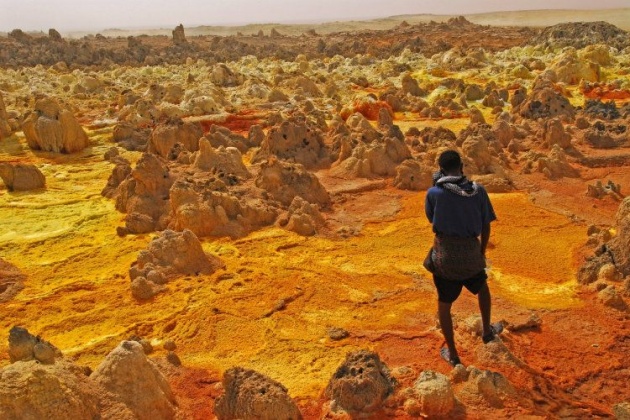
An Afar man overlooks Dallol’s psychedelic slat formations. Source: Sometimes Interesting
No matter how low you have your thermostat set this summer, chances are your neighborhood’s heat conditions pale in comparison to everyday temperatures in Dallol, Ethiopia. With average temperatures consistently hovering at 94 ˚F, Dallol, Ethiopia might just be the hottest inhabited place on the planet. The sultry Danakil Desert surrounds the desiccated settlement, which contributes to Dallol’s unforgivingly hot climate. The annual average high temperature is 105 ˚F, but in June the temperatures can skyrocket to a fiery 116 ˚F. Heat and drought pummel Dallol, making visitors feel like they’re on another planet.
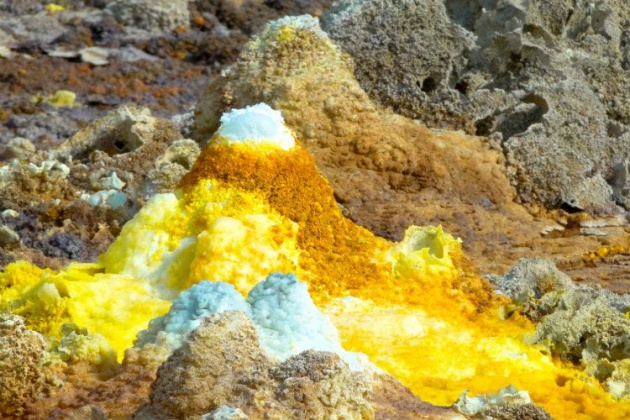
Source: Salambo in Addis
Unique geological conditions contribute to Dallol’s seemingly Martian landscape. The region is home to both the Dallol hydrothermal field and a volcano, which–given reports of an incandescent ash cloud covering the area earlier this year–may have erupted as recently as January 2015.
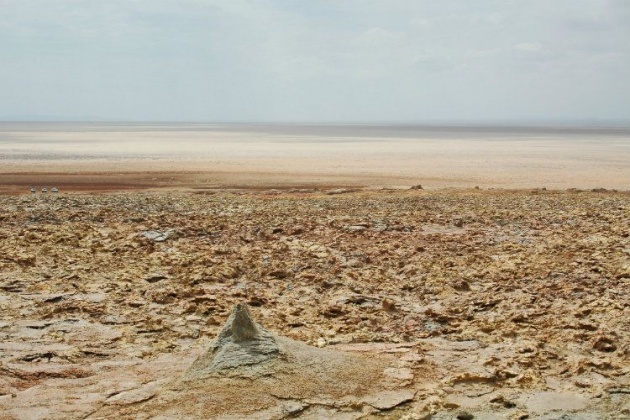
Source: Sometimes Interesting
The volcano is one of the lowest volcanic vents in the world, but it is Dallol’s hot springs that make the region so visually striking. The earth releases chemical compounds like ferrous chloride and iron hydroxide within the springs, which harden some upon release and paint the subsequent salt deposits and lakes a greenish white. After some time, inactive springs oxidize and become brown just like metal rusts in the rain. The process repeats for years, drenching an otherwise lifeless area in incredibly vibrant tones.
Sulphur and solidified black lava engulf some springs; vibrant cyan pools hide poisonous waters. Openings in the Earth’s crust, called fumaroles, spew steam and gas into the burning hot air, raising the surrounding temperature even more. This alien terrain is literally coming apart at the seams and in a hundred million years, scientists predict that the Earth will rip open and the nearby Red Sea will swallow the painted desert whole.
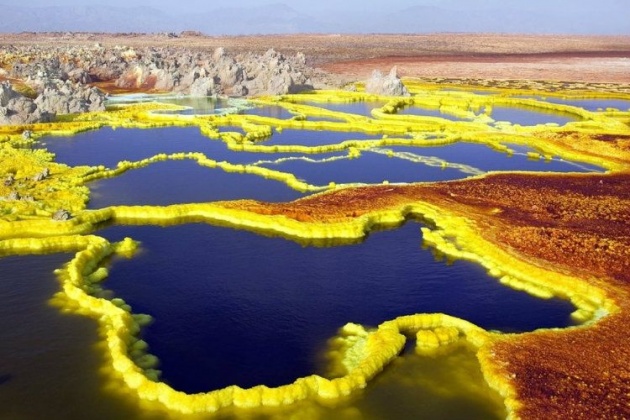
Source: Sometimes Interesting
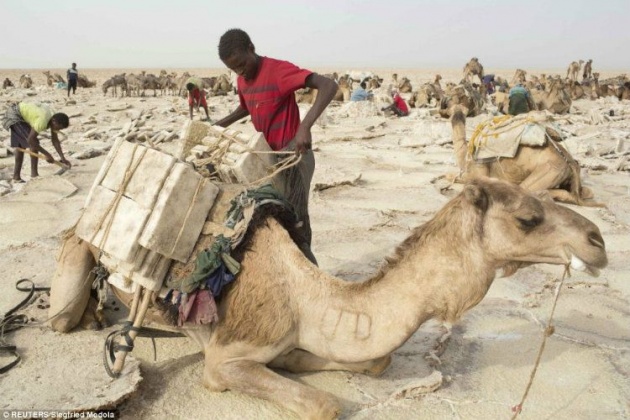
Dallol’s unforgiving climate has also made it one of the most remote areas on Earth. Roads are non-existent and camels are the only form of transport available. In spite of these obstacles, the value of the salt produced in the region has attracted a number of extractive firms throughout the 20th century. In the early 1900s, a mining town sprang up in the crater, soon to be filled with Italian and American mining operations until the 1960s.
While these towns are all but abandoned today, salt merchants still travel to Dallol to collect minerals and haul it on camelback to Berhale or Mekele, where it’s transported to the Ethiopian highlands and on to Sudan. The salt fields supply nearly 100 percent of Ethiopia’s salt.
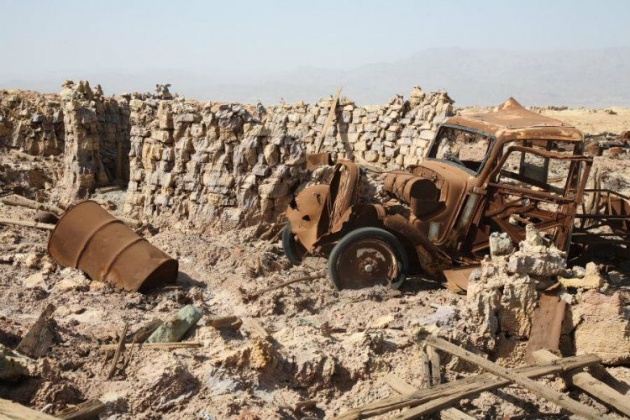
An abandoned car rots in the salty air of the desert. Source: Photo Volcanica
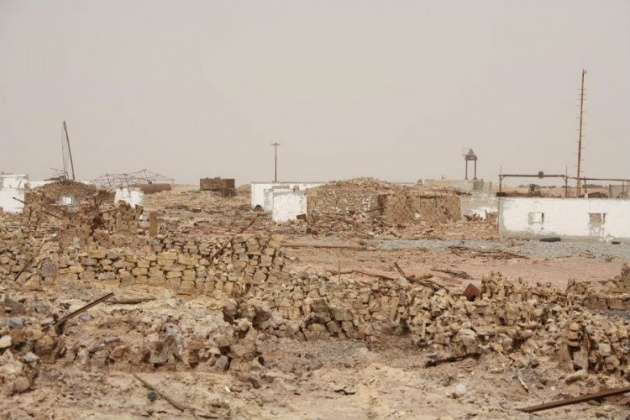
The remains of a mining camp. Source: Photo Volcanica
It is this salt that adds another element of danger to the region. Dallol’s salt is worth a good deal of money, and thus serves as a potential source of conflict–especially in an area where various groups are vying for political and territorial control. The armed nomadic Afar people protect it as theirs, and defend the salt reserves–“white gold”–from encroaching thieves and rebels. Border skirmishes are ongoing between Ethiopia and Eritrea, and often spill into the Afar region. In fact, from 2007 to 2012 insurgent fighters kidnapped and killed tourists and locals in various attacks.
Nevertheless, tourist excursions continue. Visitors are advised to travel with armed guards and bring plenty of water. Dallol is unlike any other place on the planet and for the brave few, a once in a lifetime opportunity. For the Afar, however, it’s just home. Take a closer look at life in the hottest place on Earth in the following images.
-All credits go the owner of the article Susan Sims




